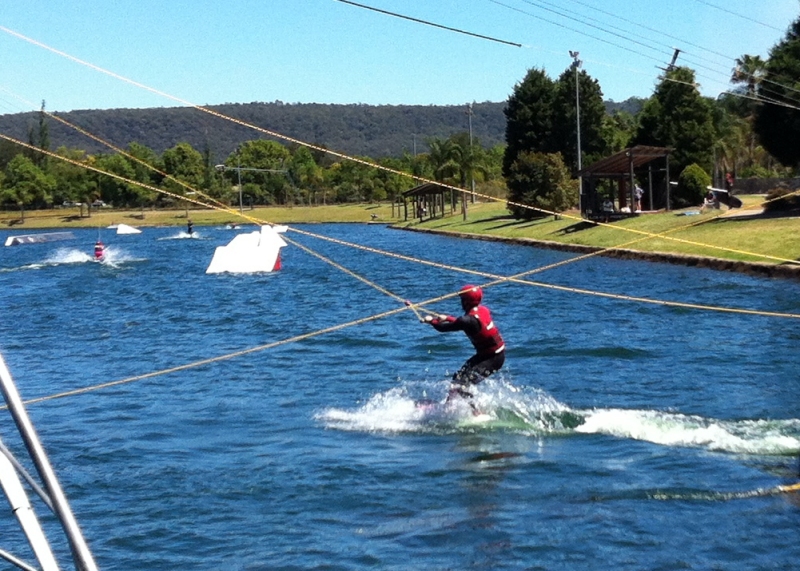Cable Skiing
Cable skiing is a form of water skiing (or wakeboarding), in which the skier’s rope and handle are pulled through an electrically-driven cable, unlike a water-skier; who is pulled by a motorboat. The mechanism consists of two cables running side by side with carriers at the distance of every 80 meters between them. The carriers are metal tubes used to hook up the tow ropes with riders. The speed of the main cable reaches up to 38 mph (61 km/h). The general speed of cable skiing is 19 mph (31 km/h), which suits the wakeboarders best.
The cable is normally suspended 8–9 meters (26–30 feet) above the water. The higher angle of pull allows bigger jumps and sharper turns. Generally, there are sliders and ramps for the riders to use on wakeboard-only cables. Another way for wakeboarders to get more aerial experiences on the cable is to “load the line”. Loading the line is an act of putting tension on the rope and using the water to act as a spring to shoot oneself into the air. Though it is also possible to play this stunt behind a boat, the higher angle of pull on the cable and the slight jerk on the corners allow the riders to get much higher in cable skiing.

Types of cable Skiing
- Fixed grip installations.
- Fixed Grip Chairlifts.
- Pulsed Gondola ropeways.
- Detachable installations.
- Monocable Detachable Gondola Lifts.
- Telemix: combined detachable chairlift and gondola lift.
- Bicable (2S) & Tricable (3S) Gondola lifts.
- Aerial tramways.
BENEFITS OF CABEL SKIING
Another important advantage of the cable as compared to the boat is its environmental friendliness. The electric motor used for the cable is pretty clean and energy-efficient.
Cable skiing is also preferable because of its great capacity. A cableway with the main cable 800 meters long, operated at 31 km/h (19 mph) makes 38.8 rounds in one hour, which is 456 miles per day if used all day long, which allows the participant to get 19 miles (31 km) of wake boarding or water skiing in that hour.
